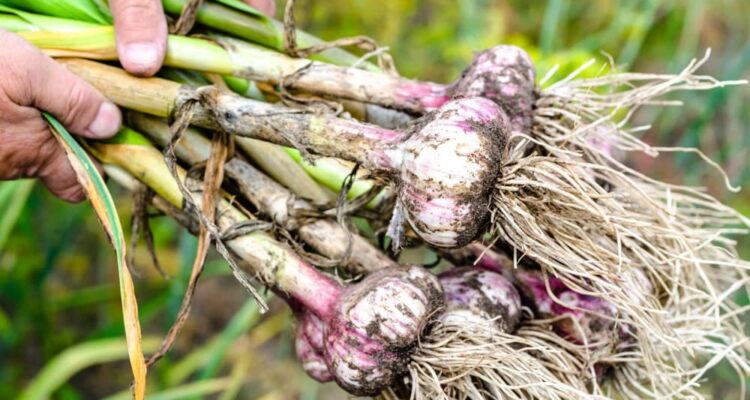Introduction
Welcome to our comprehensive guide on harvesting garlic! In this guide, we will delve deep into the intricacies of garlic harvesting, providing you with detailed insights, tips, and techniques to ensure a successful harvest. Whether you’re a seasoned gardener or a novice looking to explore the world of garlic cultivation, this guide is tailored to meet your needs.
Understanding Garlic
Before we delve into the harvesting process, it’s essential to understand the basics of garlic and its growth cycle. Garlic, scientifically known as Allium sativum, is a member of the onion family and is prized for its culinary and medicinal properties. It’s a cool-season crop that thrives in well-drained soil with ample sunlight.
Types of Garlic
There are two main types of garlic: softneck garlic and hardneck garlic. Softneck garlic is commonly found in grocery stores and has a milder flavor, making it ideal for culinary use. Hardneck garlic, on the other hand, has a more robust flavor and produces scape, which can be harvested and used in various dishes.
Planting Garlic
The first step in harvesting garlic begins with planting. Garlic is typically planted in the fall, allowing it to establish roots before the winter months. Choose a sunny spot with fertile soil and plant individual cloves about 4-6 inches apart and 2 inches deep. Ensure the pointed end of the clove faces upward.
Caring for Garlic
Garlic requires minimal maintenance but benefits from regular watering and mulching to retain moisture and suppress weeds. Keep an eye out for pests and diseases, such as aphids and white rot, and take appropriate measures to mitigate them.
Signs of Readiness
Determining when to harvest garlic is crucial for optimal flavor and storage. Watch for the following signs to gauge readiness:
Yellowing Leaves: As garlic approaches maturity, the lower leaves will start to turn yellow and wither.
Scapes: Hardneck garlic varieties produce scapes, which curl as they mature. Harvest scapes when they make a full curl for culinary use.
Bulb Size: Check the size of the bulbs. They should be well-formed with tight cloves.
Harvesting Techniques
When the time comes to harvest your garlic, follow these techniques for a successful harvest:
Timing: Harvest softneck garlic when the lower leaves are yellow, usually in late spring or early summer. Hardneck garlic may be harvested a few weeks earlier.
Digging: Use a garden fork or shovel to gently loosen the soil around the bulbs. Avoid piercing or damaging the bulbs during this process.
Curing: After harvesting, allow the garlic bulbs to cure in a warm, dry location with good airflow. This process helps enhance flavor and extends storage life.
Storing Garlic
Proper storage is essential to preserve the quality of your harvested garlic. Here are some storage tips:
Drying: Once cured, trim the roots and tops of the garlic bulbs. Store them in a cool, dry place with adequate ventilation for several weeks to further dry and cure.
Braiding: Softneck garlic varieties are often braided for storage, providing a decorative and functional way to keep them organized.
Containers: Hardneck garlic bulbs can be stored in mesh bags or open containers in a cool, dry pantry or cellar.
Conclusion
Harvesting garlic is a rewarding endeavor that yields flavorful bulbs packed with culinary and health benefits. By understanding the growth cycle, proper planting techniques, and effective harvesting methods, you can enjoy a bountiful garlic harvest year after year.

